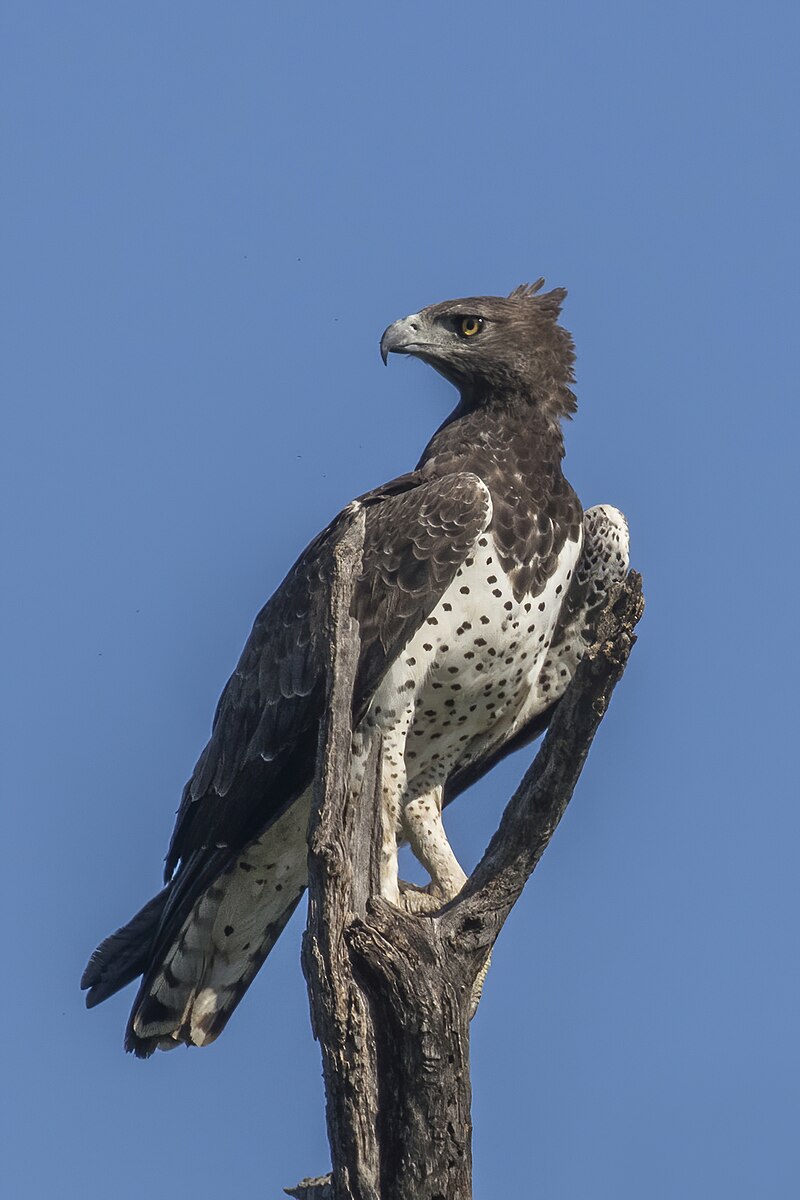The martial eagle (Polemaetus bellicosus) is a large, long-winged bird of prey that inhabits dry grassland, scrubland, and scattered woodland habitats in sub-Saharan Africa. It is one of the largest eagles in the world, with a length reaching up to 96 cm (37 inches) and a weight up to 6.5 kg (14 pounds). This species is easily distinguishable by its brown head, throat, and wings, white underparts with dark spots, and black-striped undersides of its tail feathers.
The Current Martial Eagle Population
According to the International Union for Conservation of Nature (IUCN), the current population of martial eagles is estimated to be between 3,000 and 10,000 mature individuals. However, the population has been declining significantly over the past few decades, with a decrease of over 50% in the last three generations.
The main threats to the martial eagle population include:
- Hunting and trapping
- Poisoning
- Habitat loss and degradation
- Electrocution from nesting on electrical towers
These threats have led to a significant decline in the number of martial eagles, and the species is currently listed as “Endangered” on the IUCN Red List of Threatened Species.
Habitat and Breeding Habits
 Image source: Martial eagle by Charles J. Sharp
Image source: Martial eagle by Charles J. Sharp
Martial eagles are found in dry grassland, scrubland, and scattered woodland habitats in sub-Saharan Africa. They construct large nests (1.2 to 1.8 meters in diameter) in tall trees or on electrical towers, between 6 and 24 meters above the ground.
Martial eagles are monogamous birds that become sexually mature around age four. They lay one egg that is incubated for about 45 days. Both parents feed and protect their chick for almost two months, and the young bird becomes fully independent after 2-3 years.
Feeding Habits and Prey
Martial eagles are apex predators that consume a wide variety of prey, including birds and other medium-sized vertebrates, such as poultry, smaller livestock, antelopes, hyraxes, rabbits, snakes, lizards, and monkeys. They hunt from the air or from a high perch, and can spot their prey from several kilometers away before diving to attack at speeds up to 230 km/h.
Conservation Efforts
The Peregrine Fund, a non-profit organization dedicated to the conservation of birds of prey, has been working to conserve the martial eagle and its habitats in Kenya through various initiatives, including:
- Environmental education
- Emergency response training
- Scientific research
- Habitat conservation
- Education
- Community development
The organization also supplies literature to researchers from its avian research library, which helps scientists around the world gather and share important information on raptor conservation.
Conclusion
The martial eagle is a magnificent bird of prey that plays a crucial role in the ecosystem of sub-Saharan Africa. However, its population has been declining significantly due to various threats, including hunting, trapping, poisoning, habitat loss, and electrocution. Conservation efforts by organizations like The Peregrine Fund are essential to the survival of this species, and continued research and education will be crucial in ensuring the long-term viability of the martial eagle population.
References:
– Martial eagle | Description, Prey, Conservation Status, & Facts. (2024-03-07). In Britannica. https://www.britannica.com/animal/martial-eagle
– Martial Eagle | The Peregrine Fund. (n.d.). In The Peregrine Fund. https://peregrinefund.org/explore-raptors-species/eagles/martial-eagle
– Polemaetus bellicosus – Martial eagles – Animal Diversity Web. (n.d.). In Animal Diversity Web. https://animaldiversity.org/accounts/Polemaetus_bellicosus/

